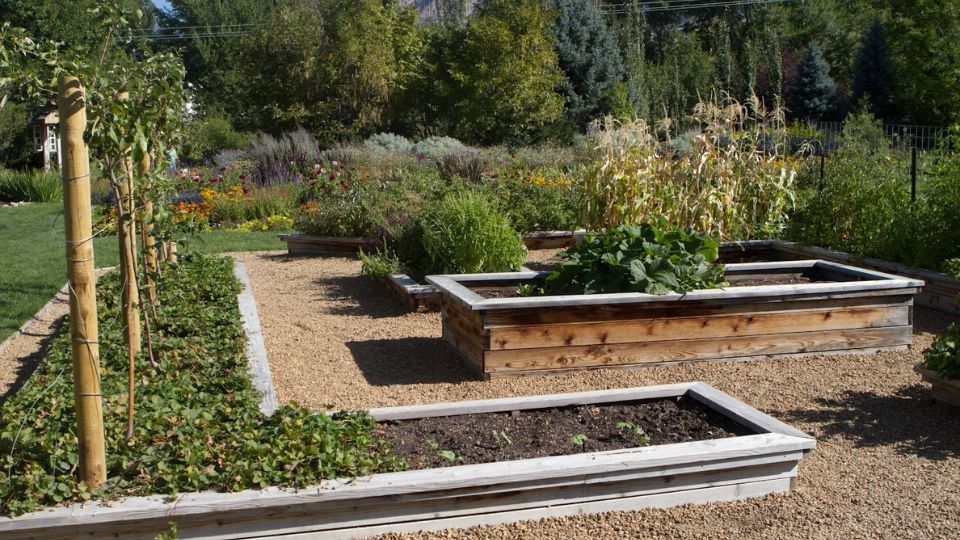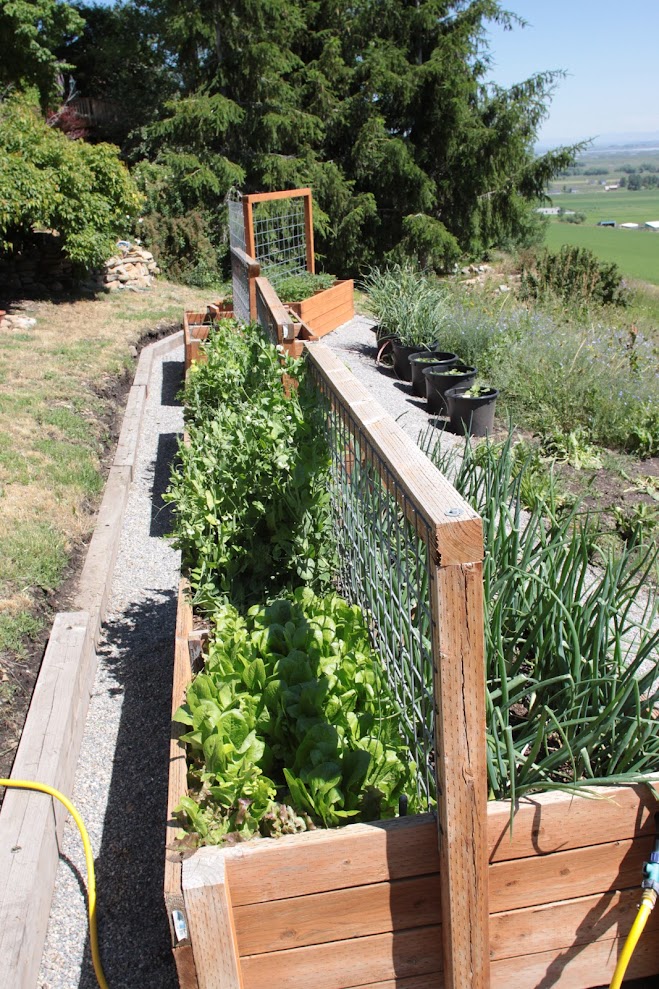Creating Sustainable School and Home Gardens:
Raised Bed Gardening

Raised Bed Gardening Benefits
Raised garden beds, also called garden boxes, are great for growing small plots of veggies and flowers. Some benefits include the following:
- Keep pathway weeds from your garden soil.
- Prevent soil compaction.
- Provide good drainage.
- Serve as a barrier to pests, such as slugs and snails.
- Keep your valuable garden soil from being eroded or washed away, as the garden bed’s sides contain it during heavy rains.
- Plant earlier in the season in many regions because the soil is warmer and better drained when it is above ground level.
A gardener can sit on the garden bed’s edge while weeding, reducing back strain, and for some, this option offers the biggest benefit of all.
By raising the soil level, raised garden beds also reduce back strain when bending over to tend the bed. If the beds are built well, the gardener can sit on the edge of the bed while weeding, and for some gardeners, this is the biggest benefit of all. Raised beds are different from container gardening as they do not have bottoms; they are open to the ground, which offers the benefit of permitting plant roots to go further into the ground for available nutrients.
Raised Bed Gardening Considerations

More Food and Flowers in Less Space Small
-space gardening techniques, such as succession planting and vertical supports, ensure that gardeners use every square inch of space. You can place your plants closer together but be careful of sunlight versus shade because the plants or beds of plants can shade each other. Use this to your advantage. Raised beds are between 12 and 18 inches in depth and no wider than 4 feet so you can reach across them to weed and plant without walking in them. The beds should be a minimum of 4 feet apart from each other. Beds longer than 12 feet may require a catwalk of some type to get across to the other side as needed.
Better Soil
A productive vegetable garden depends on good soil. With a raised bed, you start fresh with the ideal soil blend — even if the soil on your site is poor. You can easily add and enrich the soil over time. You do not want to step in the beds. Be careful to disturb the soil as little as possible; this effort helps maintain the soil’s integrity and structure.
Fewer Weeds
Raised beds are densely planted so weeds have little room to grow. When weeds do find space, it's easy to pull them from the loose, rich soil. Be sure to provide top mulch on the beds to protect them from the hot sun. In addition, you can plant earlier and later in raised beds as the soil warms sooner and stays warmer for a longer period.
Watering
The beds and plants will need water regularly. The best plan is setting up a rain gauge to determine how much water is needed versus Mother Nature. You can use soaker hoses to water plants in between. During dry spells, these can be set up on a timer. Good soil and mulching help to keep the soil moist. Use your fingers to determine the soil’s wetness. Always water in the morning if possible. Adding compost and potting soil to the beds helps retain moisture.
Acknowledgments
Smart Foodscapes (usu.edu/smart-foodscapes)
Learn more by scanning the QR code.

USDA – National Institute of Food and Agriculture (NIFA) – Sustainable Agricultural Systems (SAS) Grant #2021-69012-35952
Resources
- Raised Bed Gardening (Jett, 2022).
- Raised Bed Gardens (Fritz & Rosen, 2018).
- How to Construct a Raised Bed in the Garden (Faust & Finlay, 2023).
- All New Square Foot Gardening (Square Foot Gardening Foundation, 2024).
- Raised Bed Gardening (Heflebower et al., 2012).
References
- Faust, A., & Finlay, E. (2023). How to construct a raised bed in the garden [Fact sheet].
PennState Extension. - Fritz, V., & Rosen, C. (2018). Raised bed gardens [Fact sheet]. University of Minnesota
Extension. - Heflebower, R., Wagner, K., Gunnell, J., & Condrat, J. (2012). Raised bed gardening [Fact
sheet]. Utah State University Extension. - Jett, L. (2022). Raised bed gardening [Fact sheet]. West Virginia University Extension.
- Square Foot Gardening Foundation. (2024). All new square foot gardening, 4th edition. Cool
Springs Press.
May 2024
Utah State University Extension
Authors
Rita Hagevik and Kathy Cabe Trundle
Related Research


 Staff Resources
Staff Resources